
Buy high quality painter acrylic online at best prices
Buy painter's acrylic online at best prices at S-Polytec and benefit from the outstanding quality of our acrylate polymer-based sealants with low volume shrinkage. Optionally with UV resistance for outdoor use or special painter's acrylic that can be painted over wet-on-wet directly after application without drying times.
- Our painter's acrylic can be painted over and is characterised by low volume shrinkage
- We stock painter's acrylic with different properties for different applications
- Buy our acrylic sealants in any quantity with attractive quantity discounts
Robust cartridge press POINT High Tack

Professional cartridge press GUDFOR Heavy Duty
 €19.90 / pcs
€19.90 / pcsIncl. 19% Tax
Cartridge gun FOME FLEX Black Edition
 €11.90 / pcs
€11.90 / pcsIncl. 19% Tax
Painter acrylic Paracryl white
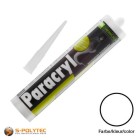 from €2.62 / pcs
from €2.62 / pcsIncl. 19% Tax
Painter acrylic Paracryl DECO white
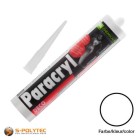 from €2.86 / pcs
from €2.86 / pcsIncl. 19% Tax
Painter acrylic Paracryl EXTERIOR white
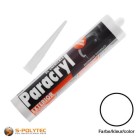 from €3.33 / pcs
from €3.33 / pcsIncl. 19% Tax
Parquet acrylic Paracryl Parquet grey beige
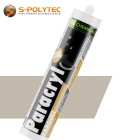 from €3.63 / pcs
from €3.63 / pcsIncl. 19% Tax
Parquet acrylic Paracryl Parquet dark beige
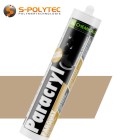 from €3.63 / pcs
from €3.63 / pcsIncl. 19% Tax
Parquet acrylic Paracryl Parquet middle oak
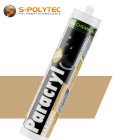 from €3.63 / pcs
from €3.63 / pcsIncl. 19% Tax
Parquet acrylic Paracryl Parquet beige
 from €3.63 / pcs
from €3.63 / pcsIncl. 19% Tax
Parquet acrylic Paracryl Parquet beech
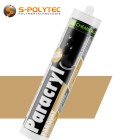 from €3.63 / pcs
from €3.63 / pcsIncl. 19% Tax
Painter acrylic - professional quality at favourable prices
Painter’s acrylic – The right acrylic for home and handicraft
Acrylic sealants are very popular in the trades and among hobby DIY enthusiasts because they are very easy to work with and are available in every DIY store at reasonable prices. Acrylic is mainly used for interior applications to prepare surfaces for painting or varnishing. Joints in window frames, window sills, door frames or corner joints between walls and ceilings can also be filled very easily with an acrylic to achieve an attractive appearance without gaps.
The main advantage of an acrylic sealant is that it can be painted over, so that the sealant can be painted over with conventional paints after it has dried sufficiently. This is not possible with silicone joints because the wall paint does not adhere to the surface of the silicone. It is also possible to paint metal or wood surfaces. Acrylic can be used to fill gaps, cracks or indentations in order to achieve an even, smooth overall appearance of the painted surface. However, care must be taken that the paints and varnishes used are free of solvents, as these could dissolve and soften the sealant.
Acrylic has excellent adhesion to almost all materials. These include the typical building materials used in the construction sector, such as concrete, sand-lime brick, clinker, plaster, plasterboard and many others. Acrylic sealants also adhere very well to untreated wood, painted surfaces or coated screen printing plates. In addition to metals such as aluminium, copper, iron or steel, acrylic can also be applied to many plastics to seal or bond them. However, there are a few exceptions, such as polyethylene, polypropylene or Teflon, because these plastics are so chemically inert that acrylic does not adhere to their surfaces.
Acrylic sealants are available in a wide range of colours, with white being the most common. The colour plays only a minor role anyway because of the paintability. Furthermore, acrylic is available in very many different qualities and designs with different properties. When selecting acrylic sealants, we have deliberately chosen high-quality painter's acrylics that are characterised by different positive features. Starting with simple painter's acrylics, which are characterised by a lower loss of volume during drying compared to simple acrylics, to special acrylics for decorative applications, which can be painted over immediately after application - wet on wet - without long drying times, to UV-resistant acrylics for outdoor use. These are somewhat more expensive compared to commercially available acrylics from the DIY store, but due to very high purchase quantities, we are able to sell even the very high-quality painter's acrylics at favourable prices.
What is acrylic
Acrylic is a common name for acrylate polymer-based sealants in which a significant part of the chemical mixture consists of polyacrylic. This is usually a ready-to-use, one-component sealant that is available in commercially available standard cartridges and is applied with a silicone gun. The application of a painter's acrylic is very similar to the application of a silicone sealant, but these two sealants are not comparable in many properties. From the areas of application to the way these two sealants cure, acrylic and silicone sometimes differ significantly from each other.
However, acrylic is not only contained in acrylic sealants, but also as a binder in acrylic paints and lacquers. Even clothing can contain acrylic, because acrylic is basically a plastic, which the designation polyacrylic suggests much sooner. Even our acrylic glass, whose chemical name is PolyMethylMethAcrylate, belongs to the group of substances in which acrylics are combined as a chemical component.
- Acrylic is a one-component, ready-to-use acrylate polymer-based sealant
- Acryl is applied similar to silicone with a simple silicone gun
- Acryl can be painted over immediately after application, depending on the finish
- Acryl adheres to all porous surfaces, as well as metal and many plastics
- Acrylic is not UV-resistant and therefore only suitable for outdoor use to a limited extent
- Acrylic is water-permeable and not suitable for waterproof sealants
NOTE: To be able to paint over acrylic, the sealant should have sufficient time to dry. Paint dries faster than the sealant, which leads to unsightly cracks in the paint. However, there are also special painter's acrylics that can be painted over immediately after application. These include Paracryl Deco, which we sell in the shop at low prices.
What is the difference between acrylic and painter’s acrylic?
In principle, every painter's acrylic is also a conventional acrylic sealant and merely a designation for an acrylic with special properties. The essential difference between a conventional acrylic and high-quality painter's acrylic is noticeable in the volume shrinkage. As water-based sealants, the water contained in the tough sealant evaporates during curing, reducing the volume of the applied joint. Depending on the quality of the acrylic, this volume loss is more or less pronounced. Because acrylic is usually used to visually enhance wall corner joints, to fill cracks and holes or to seal connection joints to windows, doors and skirting boards indoors, volume loss does not usually have a significant effect on the tightness of a joint and only has a detrimental effect on the appearance of the overpainted joint.
This volume shrinkage can be counteracted to a certain extent by sealing the joint several times in succession with a small application of sealant, but this requires considerably more work. With this build-up in several layers, you have to wait for the acrylic to cure completely after each application before you can seal again, which takes an enormous amount of time.
Painter's acrylic is available in different qualities, which result in reduced volume shrinkage with increasing quality. Although high-quality painter's acrylic is more expensive than inexpensive conventional acrylic, in most cases a simple application of sealant is sufficient without the volume shrinkage being so severe that cracking is to be expected. In addition, professional painter's acrylics can usually be painted over wet-on-wet. This means that painting can begin immediately after sealing corner joints, interior doors or connection joints from skirting board to wall, without having to wait for curing. This time advantage increases the efficiency of the craftsmen's activities and is thus also reflected in the costs for craftsmen's wages.
Advantages of painter’s acrylic compared to conventional acrylic
- Paint acrylic has less volume loss after curing
- The lower volume loss significantly reduces the cracking of the sealant
- The lower volume shrinkage keeps filled cracks and holes even
- Paintable acrylic can be overcoated immediately after application
- There is UV-resistant painter's acrylic that is especially suitable for outdoor use
Disadvantages of painter’s acrylic compared to conventional acrylic
- Paint acrylic is usually more expensive than conventional acrylic
- Paint acrylic usually has a lower density than plain acrylic
What is the difference between acrylic and silicone?
Acrylic sealants and silicones are processed in a similar way. Nevertheless, acrylic has much less in common with silicone than with acrylic plastic sheets, because the two sealants are made of completely different chemical substances and so it is hardly surprising that the properties of the two sealants are also hardly comparable. Although both acrylics and silicones are suitable for airtight sealing of joints, waterproof sealing is not possible with an acrylic sealant because, unlike silicones, it is water-permeable. Furthermore, an acrylic also does not have mould-inhibiting properties, as is the case with fungicide-finished sanitary silicones. As a result, sealing in sanitary areas, or in rooms with persistently high humidity, should not be carried out with acrylics.
Another aspect is the permanently elastic properties. After drying, acrylic is considerably less elastic than a hardened silicone joint. An acrylic is therefore only suitable to a limited extent for joints that are permanently subjected to mechanical stress due to movement. Especially in expansion joints between two materials with different degrees of thermal expansion, the lower elasticity of an acrylic can lead to cohesive fractures within the joint. In addition, most painter's acrylics are not UV-resistant, so exposure to UV radiation will cause cracking over time due to embrittlement of the sealant. Although there are also special acrylic sealants that are equipped with UV stabilisation for exterior use, you are much better off using a silicone sealant for exterior use in the long term.
The reason why painter's acrylics are nevertheless extremely popular as sealants is noticeable in interior renovation and refurbishment. Especially connection joints between walls and skirting boards and tiles, windows, doors or window sills, can be sealed much better with an acrylic to achieve a visually appealing overall appearance. A silicone can also be used to seal such joints, but walls are usually painted with a wall colour or covered with decorative wallpaper. Neither paint nor wallpaper glue will adhere to silicone because of its chemical resistance. An acrylic, on the other hand, can be painted over with conventional emulsion paints and varnishes. Filling cracks in masonry, stress cracks in plasterboard walls and ceilings, as well as filling drill holes, can be done with an acrylic in no time at all and contributes to even surfaces. You are not limited to porous, absorbent materials such as concrete, plaster, stone or plaster. Untreated wood that is later to be coated with an opaque varnish can also be pre-treated with an acrylic to fill cracks, indentations or holes. The same applies to joints in metal components and many plastics that are to be sealed and painted.
Advantages of acrylic over silicone
- Painter's acrylic, unlike silicones, can be built up in several layers
- Painter's acrylic can be painted over with most water-based paints and varnishes
- Painter's acrylic is ideal for smoothing and repairing cracks, drill holes and imperfections
- Conventional acrylic sealant is significantly cheaper than silicone sealants
- No special smoothing agents are needed to smooth acrylic joints
Disadvantages of acrylic compared to silicone
- Painter's acrylic is less mechanically resilient due to its lower elasticity
- Painter's acrylic is not mould-inhibiting and therefore not suitable for use in damp areas
- Painter's acrylic is water-permeable and not suitable for waterproof sealing
- When curing, the volume decreases due to the evaporation of water
- Simple painter's acrylic is not UV-resistant and suitable for outdoor use to a limited extent
What do you use acrylic for?
Acrylic sealants are mainly used indoors and are very often used in drywall construction or for painting work. Especially for repairing stress cracks in walls, filling drill holes or smoothing and repairing flaws in plaster, an acrylic can be used very well to level the substrate. This ensures smooth surfaces for wallpaper or wall painting. An acrylic is also excellent for wall-to-wall or wall-to-ceiling corners, or for sealing window frames and doors indoors, so that they can later be covered with wallpaper or painted over with a wall paint.
Even wide joints and cracks in walls or major damage to plaster can be filled with a painting acrylic. This can be done by building up in layers in several steps, which can be done without hesitation with an acrylic sealant. However, sufficient time should be allowed to elapse before applying another layer of acrylic.
For sealing expansion joints or joints that are subject to high mechanical stress, an acrylic sealant is only suitable to a limited extent, because it has less elasticity than a silicone sealant. Sealing sanitary facilities, such as washbasins or bathtubs, is also not possible with acrylic, because an acrylic sealant, unlike a sanitary silicone, is not particularly resistant to chemicals, so that most cleaning agents attack the acrylic and, in the worst case, cause the joint to leak. In addition, acrylic is not waterproof and is permeable to water in the event of waterlogging or high humidity. For the same reason, painter's acrylic should not be used to seal floor coverings such as laminate, tiles or vinyl, because here, too, a lasting seal can only be guaranteed if the sealant has a sufficiently high resistance to cleaning agents and mechanical stress caused by scrubbing, rubbing or brushing. For such applications, it is much better to use a silicone or an MS polymer.
How to use acrylic?
To apply acrylic, you need a sharp knife to cut open the cartridge and trim the cartridge tip to the desired size. Then place the cartridge in a conventional silicone gun and apply the sealant to the joint or crack. Larger areas are best applied in contiguous lines. For deep cracks or wide joints, a PU round cord can be useful as a filler to counteract excessive sealant consumption. However, this round cord should be inserted far enough into the joint so that the acrylic joint still reaches a sufficiently high thickness. After application, the smoothing process can be started. This should be completed before the sealant forms a skin. How much time is left for this depends on the acrylic. Here, the values sometimes vary greatly depending on the manufacturer or design of the sealant. Precise information on the working time of our acrylic sealants is listed in the respective product description.
To smooth the joints and cracks, it is sufficient to wet your fingers or a joint remover with water. Due to the water solubility of acrylic sealants, no special smoothing agents are required to achieve an even joint pattern. Larger surfaces can be smoothed very easily by wetting the surface with water from a spray gun and then smoothing with a sufficiently large smoothing trowel. Make sure that the entire surface is wetted with water to prevent the acrylic from sticking to the spatula.
The ideal working conditions are achieved at temperatures between +5°C and +40°C. The surfaces should be cleaned beforehand. The surfaces should be cleaned and thoroughly dried beforehand. Acrylic sealants are sensitive to frost and should therefore be protected from frost until fully dry. Once cured, acrylic is suitable for temperatures between -20°C and +80°C. Fresh joints should also be protected from rain or water contact in general, because an acrylic sealant is water-soluble before curing. In addition, wetness or excessive humidity prevents the joint from drying, which results in a significant extension of the curing speed.
How long does it take for acrylic to dry?
The drying time of acrylic depends on the thickness of the layer, the temperatures and the humidity. The thicker the layer of sealant applied, the longer it takes to cure completely. Since water evaporates when acrylic sealants dry, higher temperatures can accelerate curing. Lower humidity also contributes to faster drying, because the lower the percentage of moisture in the ambient air, the more the environment can absorb the evaporating water.
The concrete drying time can be calculated theoretically. The layer thickness in millimetres and the manufacturer's specification for the curing speed, which is usually given in millimetres per day (mm/24h), must be taken into account. The curing speed varies not only from manufacturer to manufacturer, but also depending on the specific design of the acrylic sealant. As a rule of thumb for the drying time, the layer thickness in millimetres can be used as the number of days until the sealant is fully cured. A joint with a depth of five millimetres will therefore be completely dry after approx. 5 days.
TIP: If you have to do it quickly, you can accelerate the drying process by raising the room temperature or using a hair dryer to heat the sealant. This allows the water in the dispersion sealant to evaporate more quickly. However, this can also contribute to the rapid loss of volume resulting in an increased risk of cracking.
How long does acrylic last?
Acrylic joints, like silicone joints, are maintenance joints that have to be renewed depending on the stress and external influences. Since painter's acrylic is usually used indoors to fill cracks and imperfections, or to seal connection joints on windows, interior doors or in the corner area of wallpaper, early renewal of the acrylic is usually not necessary. When literally changing wallpaper, it is recommended to remove the old acrylic joints and freshly apply the sealant before applying the new wallpaper.
There are, however, a whole range of factors that can reduce the service life of acrylic joints. Particularly in the case of joints that are subject to movement, it is advisable to check whether a silicone or an MS polymer is suitable, as acrylic has a lower elasticity, so that prolonged or strong mechanical stress can lead to breakage within the joint. Cleaning the joints with a cloth, a brush or a scouring pad can also damage the joint in the long term and should therefore be avoided. Strong cleaning agents should also be avoided when cleaning acrylic joints, because the sealant has a low chemical resistance and can even soften when it comes into contact with solvents. Persistent high humidity can lead to the formation of mould, because acrylic is not fungicidal. Furthermore, an acrylic joint is permeable to water anyway, which is why this sealant is also not suitable for waterproof sealing.
UV radiation can also impair the life of an acrylic joint and causes yellowing of the usually white acrylic sealant, as well as embrittlement of the sealant, because most acrylic sealants are not UV-resistant. Although there is special painter's acrylic for exterior applications, such as our Paracryl Exterior, which is UV-resistant, this is rather an exception, which is why acrylic sealants should only be used in exterior areas to a limited extent.
How do you store acrylic correctly?
The shelf life of acrylic sealants depends on various factors. As a rule, a painter's acrylic has a shelf life of 12 months. However, the date of filling and not the date of purchase is decisive. When a product was filled can usually be seen from a small imprint on the upper edge of the cartridge. Some manufacturers also indicate the expiry date separately, which is usually identified by the abbreviations MHD or EXP.
In order not to impair the shelf life, sealants should always be stored in a dry place that does not have too much humidity. Temperatures also play an important role in storage, as acrylic is sensitive to frost when not cured. Storage between +5°C and +25°C is ideal. Temperatures below freezing can render the sealant unusable. Excessively high temperatures, on the other hand, can significantly reduce the specified storage time. To ensure the shelf life of our painter's acrylics, they are stored, just like our silicones and adhesives, under ideal conditions in a climate-controlled magazine warehouse where temperatures are kept constant between 15 and 18 degrees.
Cracked cartridges can also be stored for further use until the expiry date. The same storage conditions apply as for sealed cartridges, but care should be taken to ensure that the cartridge tip remains on the cartridge and that the cartridge is sealed as airtight as possible. While curing at the cartridge tip is almost impossible to avoid, cross-linking of the sealant inside the cartridge can be counteracted. An air-impermeable bag can be very helpful for storing opened cartridges by placing the complete cartridge in the bag and sealing it securely with tape or a clip to prevent water or air from entering, as long as the remaining acrylic contained is not to be used.
How to get paint acrylic removed?
Paint acrylic can be dissolved very easily by water, provided the sealant has not yet hardened or dried, because the sealant is water-soluble in the pasty state. For this reason, cleaning tools and aids after applying the sealant is very easy.
After acrylic has dried completely, tools can be removed from coarse adhesions quite easily with a spatula or a knife. Fine residues, on the other hand, can be easily dissolved with a solvent such as acetone or thinner and rubbed off with a lint-free cloth. However, caution is advised, as the solvent does not distinguish between the acrylic to be removed and the surface to be cleaned. Therefore, use solvents only if the surfaces have a good resistance to solvents.
A spatula or knife can be used to renew acrylic joints, or to remove sealants used as fillers. Care should be taken to avoid damaging the surfaces. This may not be tragic for a plastered wall, as this can be smoothed out again later with acrylic, but for window frames or door frames, damage may not be easily concealed later. The acrylic can be cut or scraped out with a knife or spatula. Here, too, a solvent can be helpful to soften the acrylic in order to remove small residues.
CAUTION: Never use solvents on sensitive surfaces such as marble, natural stone or painted surfaces. Many plastics are also not sufficiently resistant to solvents, so that in case of doubt, cleaning with solvent-based cleaners should be avoided.
Recycling of acrylic sealants and cartridges?
At present, there are no processes for recycling acrylic sealants, so the only option is thermal recycling. This applies both to cartridges that are not completely empty and to the sealant that is removed during the smoothing process. Disposal can be done via residual waste, provided the sealant is fully cured. In its uncured state, the paste-like sealant counts as hazardous material, so it must be disposed of in accordance with local disposal regulations.
The cartridges are made of polyethylene or polypropylene, depending on the manufacturer. These are plastics that can be excellently recycled. Emptied cartridges can therefore be recycled via the yellow bag or the yellow recycling bin, so that new semi-finished plastic products made of PE or PP can later be manufactured from the recycled material.